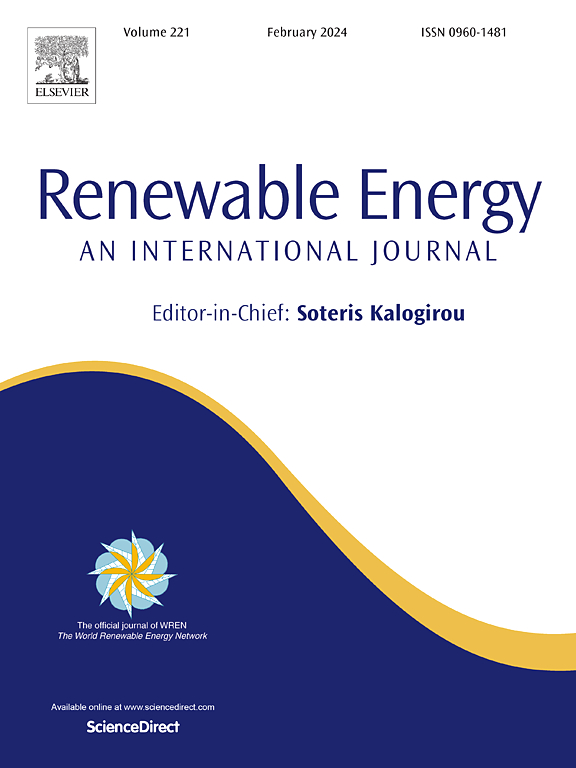印度喜马拉雅山和松-纳尔马达-塔普提地热区的储层和技术经济分析基础
IF 9
1区 工程技术
Q1 ENERGY & FUELS
引用次数: 0
摘要
与地热能源开采过程相关的高资本成本和风险是影响项目经济性的关键因素。本文介绍了基于储层热量和流量模拟的综合技术经济研究,以及印度两个地热地点(喜马拉雅山和 Son-Narmada-Tapti 即 SONATA)的平准化能源成本 (LCOE)。模拟研究表明,这两个地点的地热能提取潜力相当。相比较而言,喜马拉雅和 SONATA 两个地点已探明的累积能量潜力分别为 4.92-5.10 和 3.62-3.7 太瓦时(以 92 千克/秒的速度生产 30 年)。造成这一差异的主要原因是喜马拉雅省的气温较高,产地较深。为评估孔隙度、渗透率、裂缝间距和导热率等各种参数的影响,进行了敏感性分析。结果表明,孔隙度和渗透率是高效能源生产的关键因素。经济可行性研究表明,这些地点的 LCOE 成本较高(喜马拉雅山为 148 美元/兆瓦时,SONATA 为 137 美元/兆瓦时)。考虑到传统燃煤火力发电厂的二氧化碳排放量,这两个地点的二氧化碳减排潜力分别为 3.12 兆吨和 11.36 兆吨。总体而言,考虑到物流和运营方面的挑战以及储层热潜力,SONATA 的前景更好。本文章由计算机程序翻译,如有差异,请以英文原文为准。
Underpinnings of reservoir and techno-economic analysis for Himalayan and Son-Narmada-Tapti geothermal sites of India
The high capital cost and risks associated with the extraction process of geothermal energy are key factors in the project economics. This paper presents a comprehensive technoeconomic study based on reservoir heat and flow simulations along with the levelized cost of energy (LCOE) for two geothermal sites (Himalayan and Son-Narmada-Tapti i.e. SONATA) in India.
Dual porosity reservoir simulation models were constructed and were used to obtain the cumulative and the dynamic thermal energy potentials of these sites. The simulation studies suggest that both sites are equally potent for geothermal energy extraction. Comparatively, the proven cumulative energy potentials for the Himalayan and SONATA sites are found to be 4.92–5.10 and 3.62–3.7 TW h, respectively, for the 30 years of production at a rate of 92 kg/s. This difference can be attributed mainly to higher temperatures and deeper sites at the Himalayan Province. Sensitivity analyses were conducted to assess the impact of various parameters, including porosity, permeability, fracture spacing, and thermal conductivity. The results suggest that porosity and permeability are the key enablers of efficient energy production. The economic feasibility study suggests that the LCOE costs are high for these sites ($148/MWh for the Himalayan and $137/MWh for the SONATA). These two sites have CO2 mitigation potential in the range of 3.12 and 11.36 Megatons from a single doublet well configuration considering the CO2 emissions from conventional coal-fired thermal power plants. Overall, SONATA can be the better prospect considering the logistics and operational challenges along with reservoir heat potential.
求助全文
通过发布文献求助,成功后即可免费获取论文全文。
去求助
来源期刊

Renewable Energy
工程技术-能源与燃料
CiteScore
18.40
自引率
9.20%
发文量
1955
审稿时长
6.6 months
期刊介绍:
Renewable Energy journal is dedicated to advancing knowledge and disseminating insights on various topics and technologies within renewable energy systems and components. Our mission is to support researchers, engineers, economists, manufacturers, NGOs, associations, and societies in staying updated on new developments in their respective fields and applying alternative energy solutions to current practices.
As an international, multidisciplinary journal in renewable energy engineering and research, we strive to be a premier peer-reviewed platform and a trusted source of original research and reviews in the field of renewable energy. Join us in our endeavor to drive innovation and progress in sustainable energy solutions.
 求助内容:
求助内容: 应助结果提醒方式:
应助结果提醒方式:


